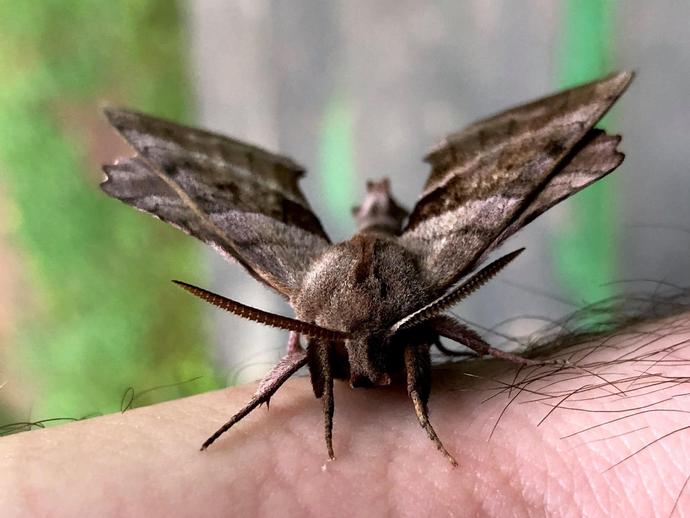June 18, 2020
One of my favorite things about this time of year is the wide variety of beautiful moths that are drawn in by my porch light. This moth is Amorpha juglandis, the walnut sphinx moth, and it can be found in deciduous forests east of the Rocky Mountains.
As adults, these moths do not eat and are mainly active during the early hours of the night. The caterpillars eat the leaves of a variety of trees, including not only walnut, but also alder, hickory, beech, hazelnut, and butternut.
One of the neatest features of the walnut sphinx caterpillar is its defense mechanism. If the caterpillar is attacked by a bird, it expels air from two spiracles (openings in an insect's exoskeleton) in its abdomen, which produces a high-pitched squeaking noise! This startles the bird and can cause it to leave the caterpillar alone.
And hey, who among us hasn't been startled and suddenly expelled air from ... you know what, never mind, we'll just leave it at that.
Thank you to VMNH Associate Curator of Invertebrate Zoology Dr. Kal Ivanov for confirming my ID! #BenInNature
This post brought to you by VMNH Supporters Janet and Richard Ashby.
ABOUT THIS POST
Social distancing can be difficult, but it presents a great opportunity to become reacquainted with nature. While he is working from home, Administrator of Science Ben Williams is venturing outdoors each day to record a snapshot of the unique sights that can be found in the natural world.
NATURE PHOTO IDENTIFICATIONS
If you discover something in nature that you would like help identifying, be sure to message us right here on Facebook with a picture (please include location and date of picture) and we'll have our experts help you identify it!

 Hours & Admissions
Hours & Admissions Directions
Directions

